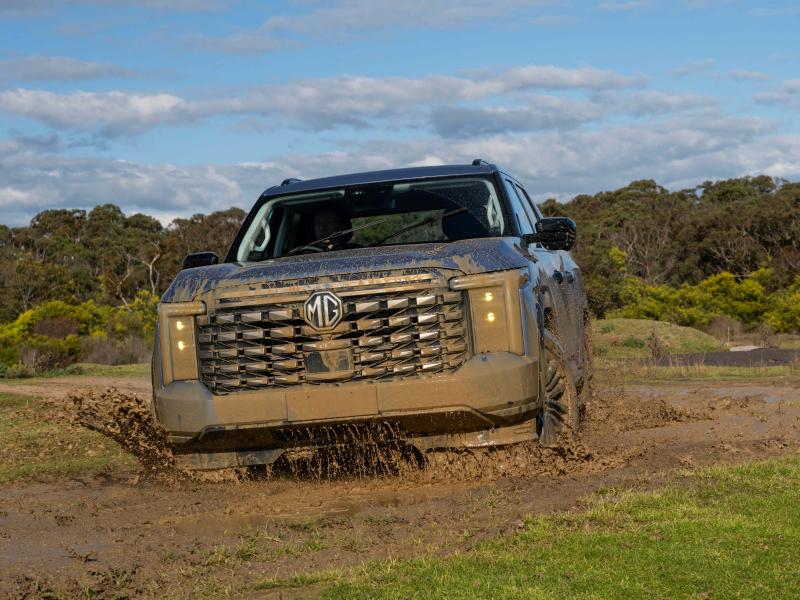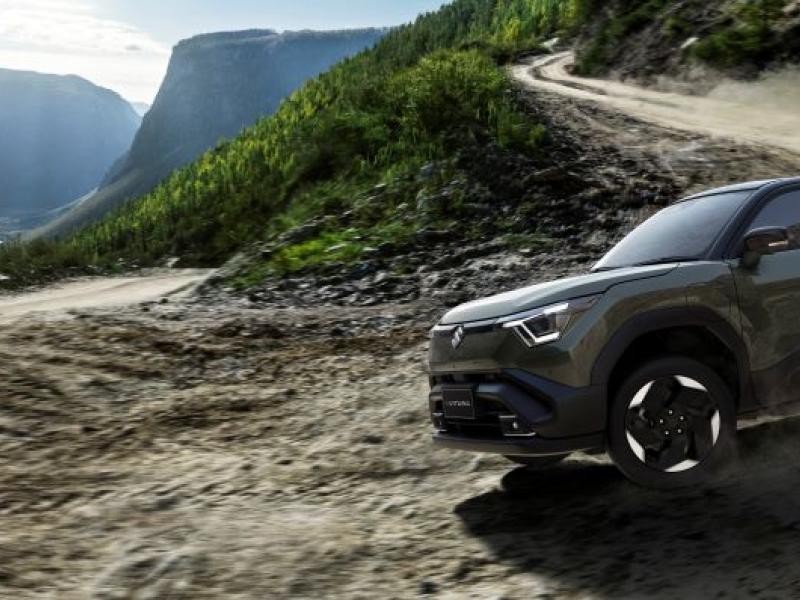Revisited a year on from being named our 4WD of the year, Ford's Everest Sport still resets the benchmarks.
We’ve said it before but it bears repeating.
Ford’s Everest is a stand-out in the seven-seater market for its looks, handling and practicality. We’ve examined this big SUV before, in fact it was our NZ4WD of the Year in 2020, and rightly so.
This time it’s like visiting an old friend who, like a latter-day David Bowie, has re-invented himself with a fascinating new persona.
In late 2020 we got our hands on a Sport in white with black accent trim – 2.0-litre bi-turbo diesel engine, ten speed transmission and all. So now we’re more Dave Grohl than David Bowie. The music just got harder, more about electric guitars pushing out a beat run by smashy Foo Fighter drumlines.
So how about some context: the Everest is an SUV, based on the Ford Ranger ute in the same way Toyota’s Fortuner is built on the Hilux platform, and the Mitsubishi Pajero Sport sits on the Triton base. Happy families in a family-friendly niche of the SUV market.
Everest waved a fond farewell to the (actually quite good) Ford Territory, just as that product in all its Aussie-developed glory had signalled the end of the Falcon wagon. Such is life. Territory was never going to be swept up by Ford into a global sales phenomenon.
But along came the Ranger, and then the Everest SUV with a reconfigured coil sprung rear end that added an SUV-appropriate supple ride to the platform. The Sport was launched in late 2019 and is thus a relatively recent addition to the Everest range, which of course added wider appeal to the whole Ranger ‘family’.
Ranger received the bi-turbo engine and new ten speed auto transmission introduced for the Raptor, and the drivetrain also tucks neatly under the Everest and thus also the Sport. Nothing else in the class has a 10-speed auto, and it helps mitigate the relatively narrow plateau where the engine’s maximum torque occurs: 1750-2000 rpm. Though the transmission’s top three ratios are well ‘overdriven’ and really best for motorway cruising, the other seven are well spaced for the work we did and for almost everything an owner might ask of this truck.
The Everest’s launch was eagerly awaited, enough so that Ford’s marketing department hasn’t had to work hard to keep stocks perilously low even when Covid was hardly a blip on society’s horizon. All of a sudden families with more than the standard 2.5 kids could motor around in a modern-looking Ford off-roader that fit in to the global design language the company has been developing around its 4WD range.
Let’s debunk some myths about 4WDs this size though. Seven-seater SUVs are by their nature not an all-day, drive-your-tribe proposition that could convey the five-sibling clan from Auckland to Wellington in utter comfort. None of them are quite as spacious as people might think. Not without a trailer or roof box.
Prospective owners who have older kids who are trying out for the basketball team aren’t going to have an easy time in anything less than a people-mover – which is a whole different cloud of perception that many think of as “dad-mobile”.
So, what’s so special about the Sport? It looks the business. It takes to gravel roads with alacrity, thanks in part to a rear track that is 4mm wider than the front.
It is five metres long and – with that third row of seats stowed – it has decent stowage space. Unlike most of the double cab utes on the market, the Everest is only available with all-wheel-drive. No rear-wheel drive versions allowed here.
We ran the Sport up to Hunua to the dams for a nose around some bush tracks where its relatively narrow stance enabled it to squeeze down tracks closely lined with ‘cutty grass’ and brambles. In those hills it did everything a people-mover would do – and so much more. Some of these areas have uneven transitions that would twist a people-mover’s chassis like pasta. A full ladder chassis like Everest’s deals with the cross-axle work with never a grumble.
The Hunua ranges provide Auckland’s best, sweetest water; they offer excellent short and long bush walks and the toughest mountain-biking in the region; they are home to an amazing diversity of wildlife including the northernmost remaining population of the beautiful kokako and most of all a place where Aucklanders can go to restore their souls.
Hunua village is old-school and special, and while you are welcome to stop for a coffee and a pie, no you cannot move there! A quick check of real estate websites reveals there are zero properties for sale unless you happen to have $800,000 sloshing around in your bank account. For a smallish wedge of bare land.
Review time. Driving dynamics already mentioned, along with tech and spec make the Everest Sport a firm favourite, even over its lavishly equipped Titanium stablemate.
Navigation is standard. Then there’s the practical and very comfy leather seats, leather steering wheel, leather door trim (sorry cows), privacy glass. Trailer sway mitigation is a must, given what the Everest is likely to be used for: boat towing, caravan towing, trailer towing or horse float duty. Heated exterior mirrors (great in cold places, but also useful in humid old Auckland). SYNC3 in-vehicle communications. Everything integrates and complements everything else.
In summary, the Everest Sport is for adventurous families who need an SUV with proven off-road capability. If people only plan to drive it around town and never head off the tarmac then something less rugged might suit you better. But Kiwis are not those people, are we? Because something practical and ‘vanilla’ simply will not walk the walk the way Everest does.
Simply, this is (still) one of the most comfortable and refined off-road ute-based SUVs on the market.







